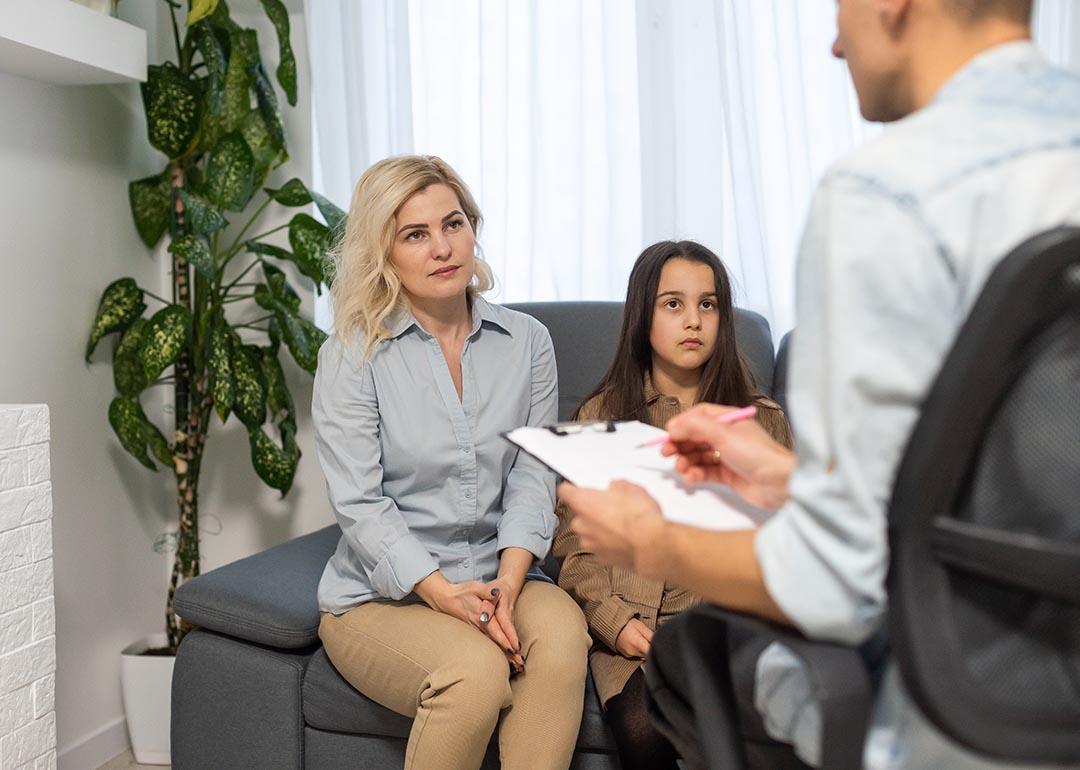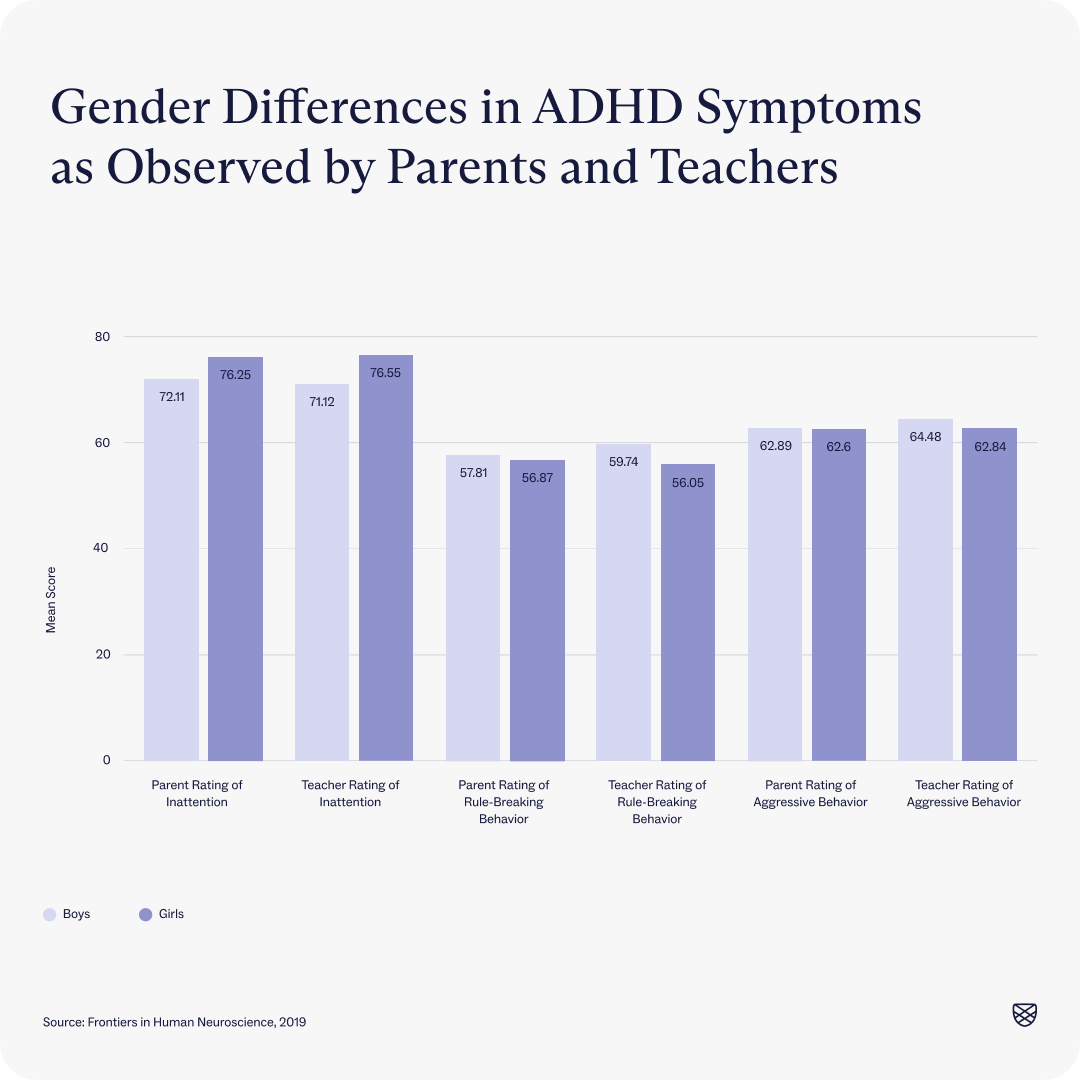
More women than ever are being diagnosed and treated for ADHD, which has long been considered a predominately male condition
This story was produced by Charlie Health and reviewed and distributed by Stacker Media.
More women than ever are being diagnosed and treated for ADHD, which has long been considered a predominately male condition
Mental health conditions affect people of all identities, but attention-deficit/hyperactivity disorder (ADHD) has long been considered a predominantly male condition. The neurodevelopmental disorder affects the brain and its functions, causing problems with attention, hyperactivity, and impulse control. During childhood, when symptoms usually first emerge, people may have biases that make it less likely for them to recognize ADHD in girls. In fact, boys are twice as likely to be diagnosed with ADHD than girls (13% vs 6%, respectively), according to the CDC.
Experts attribute this gender-based disparity to several factors. Some experts have found that girls (and women) with ADHD may mask or hide symptoms to conform to gender-based societal expectations. Additionally, anxiety and depression, which often co-occur with ADHD in girls, can sometimes lead to the condition being overlooked or wrongly diagnosed (part of existing gender biases in mental healthcare).
To assess how gender-based disparities impact women with ADHD, Charlie Health looked at the numbers, including statistics on how ADHD symptoms manifest in women and data on current rates of diagnosis and treatment.
If not properly diagnosed and treated, though, ADHD can significantly affect women and girls (in the same way it affects people of any gender), leading to poor academic or work performance, behavioral problems, relationship issues, and more. The negative effects of this gender-based disparity in ADHD diagnosis have led to recent efforts to close the gap—women are being diagnosed with ADHD at unprecedented rates, and many are feeling understood for the first time on social media.
When considering data on mental health and gender, it's important to keep in mind that most research (including that cited in this piece) is collected using the gender binary, overlooking important information about non-binary and transgender people. This exclusion reinforces healthcare disparities for gender-diverse people, deepening the marginalization they already face when seeking care.
Women are diagnosed and treated for ADHD years later than men
ADHD is often diagnosed during childhood, but girls with ADHD tend to face delays in diagnosis and treatment. One study of over 85,000 people with ADHD found that girls get diagnosed and treated for ADHD about four years later than boys—at 23 years old on average, compared to boys who are typically diagnosed as teenagers (by age 19 on average).
ADHD prescription rates have historically been lower for women than men
Even after women and girls have been diagnosed with ADHD, some may not receive medication. According to an analysis of over 20 studies looking at underdiagnosis and undertreatment of ADHD in girls, only one in four adolescent girls received prescriptions for ADHD medication (25.2%), compared to about three in four (74.8%) of boys. Similarly, in studies of children and adolescents cited in the analysis, girls were less likely to be prescribed methylphenidate (an ADHD medication marketed under brand names like Ritalin and Concerta) than boys (55.8% vs. 69.7%, respectively). These stark differences persisted across various age groups, indicating systemic biases in gender-based medication access, according to researchers.

Girls and women with ADHD often show more inattention than impulsivity
The underdiagnosis of ADHD in women and girls may be related to symptom presentation. Some experts have found that girls have more inattention symptoms (distractibility, forgetfulness, etc.) than boys, who show higher hyperactivity and impulsivity (fidgeting, risk-taking behaviors, etc.). For instance, one study of over 200 children with ADHD ages 6 to 17 found that parents and teachers recognized more inattention problems in girls than boys, with parents rating inattention problems in girls as 76.25 and boys as 72.11 (higher ratings mean greater pathology). Similarly, teachers reported inattention scores of 76.55 for girls and 71.12 for boys. By contrast, parents and teachers recognized more hyperactive and impulsive behaviors — like rule-breaking and aggression — in boys with ADHD compared to girls with ADHD.
ADHD diagnoses among women doubled from 2020 to 2022
Efforts are being made to close the gender-based gap in ADHD diagnosis and treatment. Researchers recently found that the percentage of adult women (between ages 23 and 49) newly diagnosed with ADHD doubled from 2020 to 2022. While ADHD remains more commonly diagnosed in children than adults, the overall rise in ADHD diagnoses among adults is attributed to the rise of diagnoses in women, according to the study. Although men still receive more ADHD diagnoses than women, the gender gap has narrowed over the past 12 years. In 2010, males were 133% more likely to be diagnosed with ADHD than females, but by 2022, this gap reduced to 28%, the study shows.
Prescription rates for ADHD have also skyrocketed among women
The gap in ADHD treatment rates for women is also getting smaller. The number of privately insured U.S. women ages 15 to 44 who filled a prescription for a medicine to treat ADHD increased 344% percent between 2003 and 2015, CDC data shows.
How to get ADHD treatment
If you or a young person in your life is struggling with ADHD or ADHD symptoms, consider seeking support from a licensed mental health professional. You can search for providers in your area online or get a referral from a primary care physician—just remember to ask if a person has experience treating ADHD.
For virtual treatment with no waitlist, consider Charlie Heath, which offers a virtual Intensive Outpatient Program (IOP). This program is specifically designed for young people struggling with serious mental health issues who could use more than once-weekly support, including those who are neurodivergent and have diagnoses like ADHD. Our expert clinicians incorporate evidence-based treatment modalities into individual therapy, family therapy, and group sessions to promote holistic healing, and our medical team offers medication management as needed.



